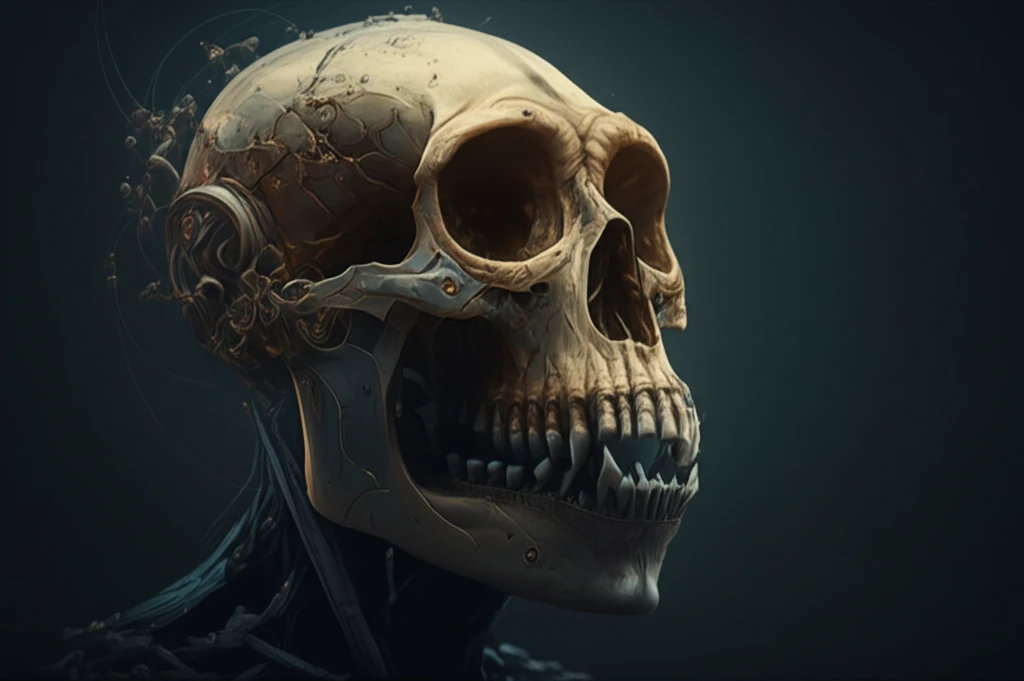
Unlocking Primate Secrets: What Monkey Teeth Reveal About Us
"A deep dive into the tooth anatomy of Sapajus apella monkeys uncovers surprising similarities with human dental structures, offering new perspectives on evolution and diet."
For centuries, scientists have looked to the animal kingdom to better understand ourselves. Among the diverse fields of study, comparative anatomy stands out, particularly in the realm of dental research. The teeth, those tiny yet incredibly durable structures, offer a treasure trove of information about an organism’s diet, lifestyle, and even its evolutionary history. Recent research focusing on the teeth of Sapajus apella, a species of monkey found in South America, is shedding new light on primate evolution and human dental characteristics.
Sapajus apella, also known as the capuchin monkey, is renowned for its intelligence and adaptability. These primates inhabit a wide range of environments, from primary and secondary forests to more open areas, making them an ideal subject for studying how dental structures adapt to different diets and ecological niches. Their teeth, like ours, are subjected to various environmental pressures, making them a valuable model for understanding the broader aspects of dental health and evolution.
A groundbreaking study has recently explored the detailed dental anatomy of Sapajus apella, examining everything from the external structure of the teeth to the microscopic composition of the dentin. By combining morphometric analysis, macroscopic anatomy, ultrastructural studies, and physical property assessments, researchers have uncovered striking similarities between monkey and human teeth. These findings not only enhance our understanding of primate dental evolution but also open new avenues for future research in dental treatments and comparative biology.
What Does Monkey Tooth Morphology Teach Us?

The primary objective of the study, conducted by Fernandes L.M.P. et al. and published in Pesquisa Veterinária Brasileira in August 2014, was to comprehensively analyze the dental morphology of Sapajus apella. The researchers aimed to contribute to the existing knowledge of primate dental anatomy by examining morphometric, ultrastructural, and physical properties of their permanent teeth. Ten adult male monkeys were studied, with a detailed analysis of their teeth, including length, root anatomy, root canal structure, dentin composition, and microhardness.
- Root Number Variation: The study identified specific characteristics in the root anatomy of Sapajus apella, notably in the number of roots in the second upper premolar and the presence of a third premolar.
- Dentin Tubule Analysis: A decrease in the number and diameter of dentinal tubules along the root canal was observed. Dentinal tubules are microscopic channels that radiate through the dentin, the hard tissue beneath the enamel.
- Comparative Analysis: The study also drew parallels with human teeth, particularly in microhardness values and the proportion of chemical elements found in the root dentin.
The Future of Dental Research Through Primates
The study by Fernandes L.M.P. et al. underscores the importance of comparative dental research in understanding primate evolution and advancing dental treatments. By identifying similarities and differences between the teeth of Sapajus apella and humans, scientists can develop more effective strategies for preventing and treating dental diseases. This interdisciplinary approach, combining anatomy, morphology, and materials science, opens new doors for innovative solutions in both human and veterinary dentistry, ensuring healthier smiles for all.
